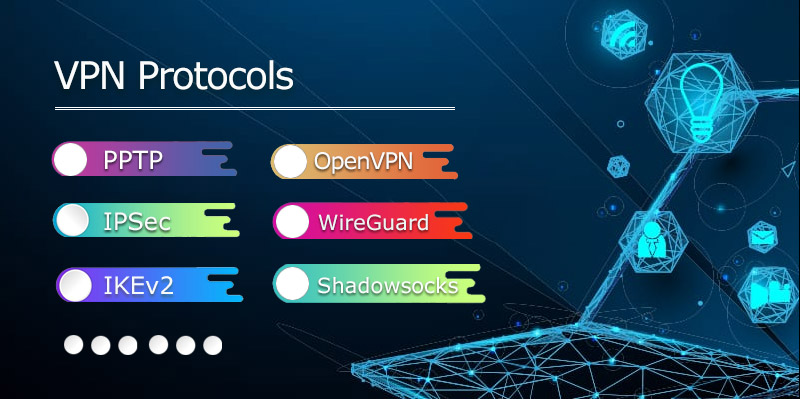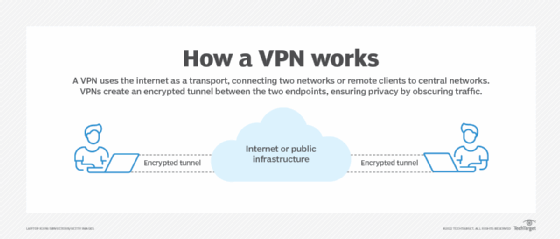Featured
Table of Contents
- – Point-to-point Tunneling Protocol (Pptp)
- – Traffic Protection Using Ipsec Tunneling Proto...
- – [Solved] Before You Begin
- – What Is A Vpn Tunnel & How Vpn Tunneling Works?
- – What Is A Vpn Tunnel? Everything You Need To ...
- – What Is A Vpn Tunnel And How Does It Work?
- – Types Of Vpn Protocols
- – Vpn Protocols: Are You Using The Right One?
- – Vpn Tunnel: What It Is And How It Works
- – Vpn Tunnel: What It Is And How It Works
Point-to-point Tunneling Protocol (Pptp)
This gives more versatility than developing an SSH tunnel to a single port as previously described. SOCKS can release the user from the constraints of connecting just to a predefined remote port and server. If an application does not support SOCKS, a proxifier can be used to reroute the application to the regional SOCKS proxy server.
In recent variations of Open, SSH it is even enabled to create layer 2 or layer 3 tunnels if both ends have allowed such tunneling abilities. This creates tun (layer 3, default) or tap (layer 2) virtual user interfaces on both ends of the connection. This enables normal network management and routing to be utilized, and when used on routers, the traffic for an entire subnetwork can be tunneled.
Traffic Protection Using Ipsec Tunneling Protocol Overview
VPNs can work on any gadget that connects to the web and can run a VPN app, including your smartphone, computer, and some smart TVs. All you have to do is download a VPN app to your device and follow the instructions to link to a VPN server. When you link to the VPN server, an encrypted connection is worked out between your device and the VPN server.
In the last 20 years, mass surveillance has been deployed versus entire populations in many countries.
[Solved] Before You Begin
This leaves your traffic vulnerable to interception, consisting of any passwords or other delicate data you enter. A bigger concern is that the information gathered from you by any of the above trackers will suffer a data leak that exposes your info. A VPN will not prevent all (or perhaps most) leakages, but it is one more layer of security in an info area designed to extract your data.
If you're traveling abroad, you can link to a VPN server back home to log in to your account. There are other benefits of a VPN that are really essential in certain use cases: Avoid peers from seeing your genuine IP address when using P2P file sharing (Bit, Gush).
What Is A Vpn Tunnel & How Vpn Tunneling Works?
VPN protocols have different strengths and weak points. Here's a fast summary: An older VPN procedure with a number of recognized vulnerabilities.
Layer 2 tunneling procedure (L2TP) and Internet Protocol security (IPSec) are two protocols that often work together to work out the server connection and handle the file encryption, respectively. This is a more protected system than PPTP, but it might have vulnerabilities and normally isn't as fast or stable as more recent protocols.
What Is A Vpn Tunnel? Everything You Need To Know (2023)
A VPN tunnel is just a metaphor for the file encryption a VPN utilizes to hide your information as it takes a trip between your gadget and the VPN server. Most web traffic is visible to others on the network, so 3rd parties, like your internet service company or government firms, can see what sites you check out and where you lie.
VPN tunneling also avoids hackers from misusing information by securing them from end to end. Many VPNs use AES-256 file encryption, which militaries, banks, and governments utilize to protect confidential information. It is technically difficult to break the AES-256 encryption without a cipher secret, as it would take trillions of years to do so.
What Is A Vpn Tunnel And How Does It Work?
Like IKe, V2, Open, VPN uses powerful speed and security for VPN tunneling. It is likewise open source, which means professionals have constantly vetted and improved the procedure throughout the years. Wire, Guard is the most recent and best VPN file encryption protocol. Compared to Open, VPN and IKEv2, Wireguard is much faster and more safe and secure, thanks to its smaller sized code size.
Proxies just work for web browsers and not apps. If you utilize an app regardless of connecting to the proxy, your real IP address will still be revealed.
Types Of Vpn Protocols


VPN innovation is simple, however there are. All of this can get really technical, so here's a fast rundown of which types of VPN and tunneling protocols are right for your organization. Both remote access and site-to-site VPN services solve the same problems utilizing different approaches. The end objective is still securing business resources from unauthorized access.
Organizations mainly utilize this type to. You can think of it as a VPN connection making a safe and secure path from your device to gain access to sensitive files or company products on the other end.
Vpn Protocols: Are You Using The Right One?
A lot of companies embrace widely hosted somewhere else, utilizing huge data. For that reason, setting remote access VPN up may not be the most practical option as in those cases, the data would be going from users' device to the main center, to the information center and back. Not only this might introduce.
It's worth noting that you need to prepare depending on the number of users accessing them. It needs independently configuring for both networks, and it works finest for cases when you have several remote sites.
Vpn Tunnel: What It Is And How It Works
It supplies comprehensive directions on packaging the data and what checks to perform when it reaches its destination. It is twofold file encryption the encrypted message sits in the data package, which is additional encrypted again.
There even are proprietary Wire, Guard implementations like Nord, Lynx. A VPN protocol should be the last thing off the list that you need to be choosing. : remote access or site-to-site. It should limit your list of options. It's worth noting that neither remote access nor site-to-site are the only possibilities to set up an Internet-based VPN.
Vpn Tunnel: What It Is And How It Works

I.e., if you're currently using routers that natively support Open, VPN, it may make more sense to use them rather than throwing them out to get ones that can deal with Wireguard.
What is a VPN Tunnel & How VPN Tunneling Works? Data, Prot is supported by its audience. When you purchase through links on our website, we might earn a commission. This, nevertheless, does not influence the evaluations in our evaluations. Discover more. As we search the web, we leave crumbs of browsing data on the pages we go to.
Table of Contents
- – Point-to-point Tunneling Protocol (Pptp)
- – Traffic Protection Using Ipsec Tunneling Proto...
- – [Solved] Before You Begin
- – What Is A Vpn Tunnel & How Vpn Tunneling Works?
- – What Is A Vpn Tunnel? Everything You Need To ...
- – What Is A Vpn Tunnel And How Does It Work?
- – Types Of Vpn Protocols
- – Vpn Protocols: Are You Using The Right One?
- – Vpn Tunnel: What It Is And How It Works
- – Vpn Tunnel: What It Is And How It Works
Latest Posts
The Top 10 Enterprise Vpn Solutions
Advantages And Disadvantages Of A Vpn
10 Best Cloud Vpn Providers In 2023
More
Latest Posts
The Top 10 Enterprise Vpn Solutions
Advantages And Disadvantages Of A Vpn
10 Best Cloud Vpn Providers In 2023